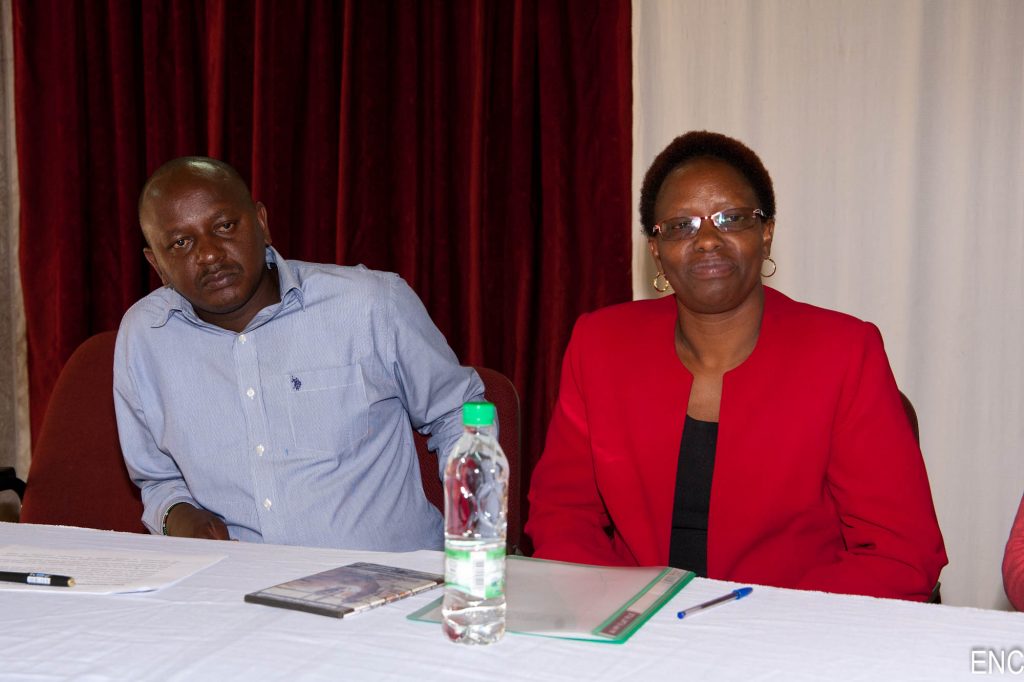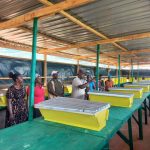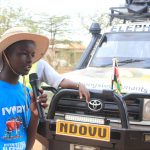Media Brief in Lusaka Zambia
EAST –SOUTH AFRICA IVORY BELONGS TO ELEPHANTS” CAMPAIGN WALK 2018 JIM JUSTUS NYAMU’s SPEECH 
“Ladies and Gentlemen,
It is a great honor for me to stand in front of this warm audience in Lusaka Zambia and to have the privilege of sharing my story as a wildlife conservationist from Kenya.
I have been walking from Nairobi since July 14th with a team of 7 Kenyans and 1 Zambian totaling to 8 and so far we have covered over 13000 KMS. We have walked 941 Km in Zambia and I must personally thank the Zambians for their warm hospitality, their encouragement and their beautiful smiles.
The reason we walk is to remind our fellow Africans that when our problems are shared, they can be addressed and they can be resolved. Solutions that have worked elsewhere can be replicated here. Lessons from here can help other Africans elsewhere.
We have common issues related wildlife in Africa. We hear about human-wildlife conflict, the encroachment of wildlife habitats by development, competition for space, encroachment on riparian land, poaching and mostly driven by human greed and poverty levels.

What can concerned citizen who care about the environment and wildlife do about it?
Zambia is a beautiful country, it has magnificent landscapes and it is my personal wish that this country’s natural beauty, remains protected for the prosperity of the future generations. Zambia can learn from the ecological challenges my own country Kenya has faced, where we have destroyed parts of our conservation areas, and tampered with the natural environment. I would like to challenge the Zambians to protect their natural land resources for prosperity and to become a conservation leader in Africa.
I would like to encourage Zambians to practice domestic tourism, in order to appreciate the gifts of nature that God has endowed on this country. Teach your children about the wonders of nature and why they must be conserved. I would also invite Zambians to travel to East Africa and explore places like Masai Mara, Serengeti, Tsavo and other places. In that way, East and South Africans begin to realize how much we have in common and why we must continue cooperation. This has been my message to Africans ever since I started walking in 2013.
I founded an NGO known as Elephant Neighbors Center, through which I began my campaign walk dubbed ‘Ivory Belongs to Elephants’. Since then, I have walked and covered over 11,000KM mostly in Kenya, Tanzania, Uganda, the USA and the UK in a bid to raise awareness on the plight of the African Elephant.
So far, I have completed two campaign walks away from Africa my most recent being in the UK in December 2017. The other walk I did was in the USA in 2013 where I covered 560 miles. My message then was to encourage both the UK and USA to stop availing a market for Ivory. Notably, in 2013 USA was the second largest consumer of ivory after China. My campaign walk there was fruitful as I witnessed six tons of Ivory being crushed in Denver in Colorado.
Ladies and gentlemen,
This walk from Nairobi to Johannesburg South Africa aims to cover 4500KM traversing through six countries that are elephant rangelands and they include; Kenya, Tanzania, Zambia, Zimbabwe, Botswana and finally South Africa. The question I get often (and probably some of you are asking yourselves) is, why walk for elephants and not any other animal and what inspired/inspires you to keep walking?
According to African elephant specialist group Africa elephant’s population dropped from 472,269 to 401,732 between 2006 and 2013, the cause of the decline is illegal poaching of elephants amounting to a 9% rate of decline primary. The data shows that between 2006 and 2013 Africa lost 193,749 elephants.
According to AED and Greater Elephant census Zambia host 21,758 with 85% carcass ratio in Sioma Ngwezi National Park.
This is a drop from 21,967 in 2015. The largest eco-system is Luangwa Eco-system with 50,103.
Botswana hosts the highest population of savanna elephants in Africa (2013; 133,453) followed by Zimbabwe (2013; 67,954). Four countries in this region namely Botswana, Zimbabwe, Namibia and South Africa have listed their elephants in Appendixes II of the CITES appendixes, the Appendix II means the country can carry on trade on elephants and animal trophies therein and this has served as an incentive for Poaching in Africa.
The absence of sufficient integration mutual and bilateral policies and an action structure against acts and crimes of poaching to protect cross-border wildlife reserves and parks has created loopholes for trophy hunters and a dismal conviction rate.
None of the six bordering countries is safe from poachers working independently and is faced with the vulnerability of cross-border elephant movement and migrations. It is significant that efforts such as the East – South African Walk, aimed at strengthening inter- state collaborations to identify integrated anti-poaching mechanism, action plan and task forces are required ahead of Conference of Parties (COP 2019) in Sri Lanka.
As a result of limited inclusive and bilateral integration and policies frameworks against poaching acts and crimes despite the cross-border elephant conservation agreements, none of these border countries is safe working independently, considering the frequency of cross-border elephant migrations.
The East–South African Walk will hopefully chart a short, medium and long-term plans to ensure the both East and South African Community proactively engage in bilateral and multilateral collaborations which will identify effective integrated anti-poaching mechanism and strategies.
The outcomes of this walk as identified and collected from opinions, perceptions, demands and solutions drawn from people in the grass roots that we meet along our walk, will be shared with wildlife management government entities and other conservation stakeholders to streamline existing systems and frameworks in elephant conservation.
Lastly, this walk aims to cautiously solicit the four countries namely Zimbabwe, Namibia, Botswana and South Africa to move their elephant population to CITES Appendix I in an attempt to stop domestic trade in ivory that has attracted ivory barons from China, Japan, and UK among other consumers markets and end poaching of elephants in Africa.
I encourage the Zambian government to look at the feedback from grassroots communities instead of relying solely on boardroom strategies. Governments have the duty to address the issue of mitigating the animosity between communities and wildlife and one way of doing this is spending time with the communities and listening to their views.
This is why I continue this campaign to listen, learn and engage communities who are on the frontline of conservation areas to change their attitudes and learn the benefits of wildlife conservation.
I hope you will keep us company during the walk. We will be active on social media through the #WalkForElephants #StepWithJim on Twitter, On Facebook at our page Elephant Neighbors Center and on my personal page, Jim Justus Nyamu and on Instagram @NyamuJim and the Elephant Neighbour centre. We look forward to your continued support, encouragement and prayers on this long journey to save our elephants.
I would like to welcome more people onboard in this journey of securing a future for elephants for the sake of our biodiversity and most importantly for our children’s children to see live elephants in the wild. IVORY BELONG TO ELEPHANTS.
Thank you so much and may the Almighty bless you all!




